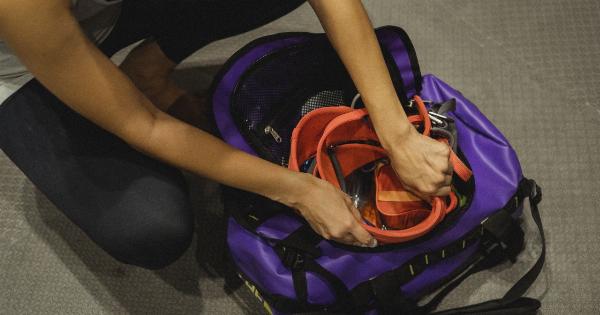Thermoregulation refers to the ability of an organism to maintain a stable internal body temperature, despite changes in the external environment. This process is essential for the proper functioning of various bodily processes.
The body is constantly producing and releasing heat, and thermoregulation ensures that the body maintains a balance between heat production and heat loss.
The Importance of Thermoregulation
Thermoregulation is crucial for several reasons:.
- It helps to maintain cellular function and prevents tissue damage.
- It allows the body to perform optimally during physical activity and exercise.
- It prevents overheating or hypothermia, which can be life-threatening.
- It provides a stable environment for the body’s various metabolic processes to occur.
The Process of Thermoregulation
The process of thermoregulation is complex and involves several mechanisms and feedback loops. When an organism is exposed to a change in temperature, several responses occur:.
- The hypothalamus, which is the primary regulator of body temperature, detects the change in temperature and sends signals to the rest of the body to respond.
- The body will then initiate either a cooling or warming response to bring the body’s temperature back to its set point.
- The cooling response may include sweating, which helps to release heat from the body, and vasodilation, which allows for increased blood flow to the skin to enhance heat loss.
- The warming response may include shivering, which helps to generate heat through muscle contractions, and vasoconstriction, which reduces blood flow to the skin to retain heat.
Factors Affecting Thermoregulation
Several factors can affect an organism’s ability to thermoregulate effectively:.
- Age: Infants and elderly individuals are more susceptible to temperature changes and may have a harder time thermoregulating.
- Body composition: Body fat insulates the body and can affect the body’s ability to lose heat efficiently.
- Health status: Certain medical conditions, such as thyroid disorders or diabetes, can affect the body’s ability to regulate temperature.
- Environmental conditions: Extreme heat or cold can make it more challenging for the body to thermoregulate effectively.
Heat Stress and Heat Stroke
Exposure to extreme heat can lead to several heat-related illnesses, including heat stress and heat stroke. Heat stress occurs when the body is unable to cool itself effectively, and symptoms may include heavy sweating, dizziness, and cramping.
If left untreated, heat stress can progress to heat stroke, which is a medical emergency. Symptoms of heat stroke may include confusion, seizures, loss of consciousness, and organ failure.
Tips for Thermoregulating Effectively
If you want to maintain optimal body temperature and avoid heat-related illnesses, follow these tips:.
- Stay hydrated by drinking plenty of fluids.
- Avoid exercising during the hottest parts of the day.
- Wear lightweight, breathable clothing that allows for adequate air circulation.
- Seek shade or cool indoor spaces during extreme heat.
- Avoid drinking alcohol, as it can impair the body’s ability to thermoregulate effectively.
Cold Stress and Hypothermia
Exposure to extreme cold can lead to several cold-related illnesses, including cold stress and hypothermia. Cold stress occurs when the body is unable to maintain its core temperature, and symptoms may include numbness, shivering, and fatigue.
If left untreated, cold stress can progress to hypothermia, which is a medical emergency. Symptoms of hypothermia may include confusion, slowed heart rate, and loss of consciousness.
Tips for Thermoregulating in Cold Environments
If you want to maintain optimal body temperature and avoid cold-related illnesses, follow these tips:.
- Wear appropriate clothing, including layers that can be added or removed as needed.
- Avoid getting wet, as wet clothing can increase heat loss.
- Stay active to generate heat through muscle contractions.
- Seek shelter or warm indoor spaces during extreme cold.
- Avoid consuming caffeine or nicotine, as they can impair the body’s ability to thermoregulate effectively.
Conclusion
Thermoregulation is a vital process that allows the body to maintain a stable internal temperature despite changes in the external environment.
By understanding the mechanisms of thermoregulation and taking steps to thermoregulate effectively, you can maintain optimal health and avoid heat- and cold-related illnesses.




























